It looks like you're using an Ad Blocker.
Please white-list or disable AboveTopSecret.com in your ad-blocking tool.
Thank you.
Some features of ATS will be disabled while you continue to use an ad-blocker.
10
share:
The ancient city of Mari in modern day Syria is one of the most endangered, and often overlooked sites of ancient civilization. Discovered in 1933
while digging in a mound looking for a gravestone, Mari has proved to be one of the most abundant sites for artifacts and information of the ancient
world in existence.
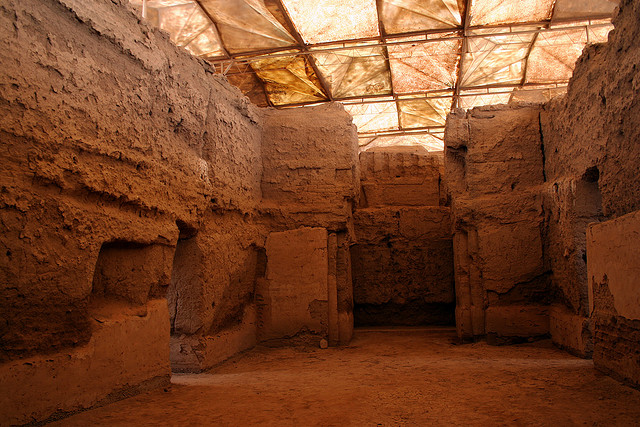
en.wikipedia.org...

Intendant Ebish-II, found in the temple of Ishtar at Mari, Archaic Dynasties (ca. 2400 BC), Louvre Museum
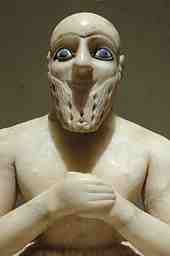

Tablet of King Zimri-Lim of Mari, ca. 1780 BC, Louvre Museum
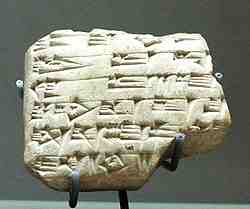

The Mari Tablets have proved to be a valuable source of information for people researching ancient civilizations and biblical lore. They are some of the most important artifacts known from the ancient world.
Although the excavation of Mari has led to fantastic discoveries, it's exposure to the elements is beginning to erode this ancient site. Without constant care and maintainence, Mari will slowly crumble, or be reburied.
www.gadling.com...
popular-archaeology.com...

globalheritagefund.org...
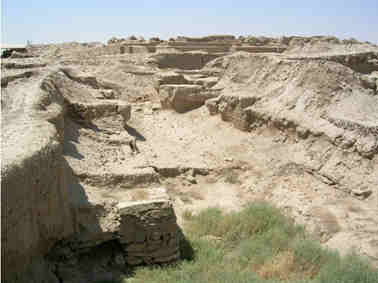
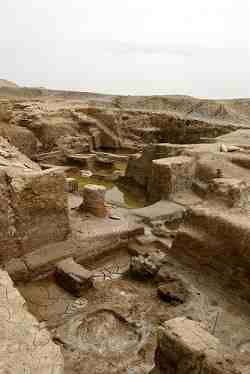
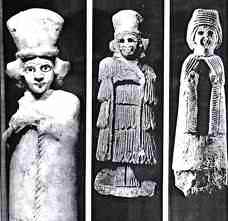
Mari is truely one of the most amazing discoveries that has been made in modern times, and it's continued existence depends on it's upkeep. There very well could be many more treasures hidden in this ancient city, just waiting to be discovered.
One question that I have concerning this site is about the water that flowed into the city. In looking at the illustration of the city, an offshoot of the river flowed thru the city. Whether it was nature, or man-made, I'm uncertain, but if it was created by the people, that was quite an accomplishment considering the time that it was created.
www.historyfiles.co.uk...
homepages.gac.edu...
www.israel-a-history-of.com...

en.wikipedia.org...
Mari (modern Tell Hariri, Syria) was an ancient Sumerian and Amorite city, located 11 kilometers north-west of the modern town of Abu Kamal on the western bank of Euphrates river, some 120 km southeast of Deir ez-Zor, Syria. It is thought to have been inhabited since the 5th millennium BC, although it flourished with series of superimposed palaces that spans a thousand years, from 2900 BC until 1759 BC, when it was sacked by Hammurabi.

Mari was discovered in 1933, on the eastern flank of Syria, near the Iraqi border. A Bedouin tribe was digging through a mound for a gravestone that would be used for a recently deceased tribesman, when they came across a headless statue. After the news reached the French authorities currently in control of Syria, the report was investigated, and digging on the site was started on December 14, 1933 by archaeologists from the Louvre in Paris. Discoveries came quickly, with the temple of Ishtar being discovered in the next month. Mari was classified by the archaeologists as the "most westerly outpost of Sumerian culture".[citation needed] Since the beginning of excavations, over 25,000 clay tablets in Akkadian language written in cuneiform were discovered. Finds from the excavation are on display in the National Museum of Aleppo, the National Museum of Damascus, and the Deir ez-Zor Museum. In the latter, the southern façade of the "Court of the Palms" of Zimri-Lim's palace has been reconstructed, including the wall paintings.
Intendant Ebish-II, found in the temple of Ishtar at Mari, Archaic Dynasties (ca. 2400 BC), Louvre Museum


Tablet of King Zimri-Lim of Mari, ca. 1780 BC, Louvre Museum

Mari Tablets
The Mari Tablets belong to a large group of tablets that were discovered by French archaeologists in the 1930s. More than 25,000 tablets in Akkadian were found in the Mari archives, which give information about the kingdom of Mari, its customs, and the names of people who lived during that time. More than 8,000 are letters; the remainder includes administrative, economic, and judicial texts.

The Mari Tablets have proved to be a valuable source of information for people researching ancient civilizations and biblical lore. They are some of the most important artifacts known from the ancient world.
Although the excavation of Mari has led to fantastic discoveries, it's exposure to the elements is beginning to erode this ancient site. Without constant care and maintainence, Mari will slowly crumble, or be reburied.
www.gadling.com...
popular-archaeology.com...
Popular Archaeology magazine reports that erosion and neglect are returning the city to the earth. The people of Mari built with fired mud brick, using clay that was cheap and plentiful along the banks of the Euphrates. Wind and rain have been picking away at the bricks for thousands of years, and it doesn't help that more walls have been exposed by archaeologists. Dust to dust.

The Global Heritage Fund released a report on Syria's endangered heritage sites that lists Mari as the one in most need of help.
globalheritagefund.org...



Mari is truely one of the most amazing discoveries that has been made in modern times, and it's continued existence depends on it's upkeep. There very well could be many more treasures hidden in this ancient city, just waiting to be discovered.
One question that I have concerning this site is about the water that flowed into the city. In looking at the illustration of the city, an offshoot of the river flowed thru the city. Whether it was nature, or man-made, I'm uncertain, but if it was created by the people, that was quite an accomplishment considering the time that it was created.
www.historyfiles.co.uk...
homepages.gac.edu...
www.israel-a-history-of.com...
edit on 6-2-2012 by isyeye because: (no reason given)
reply to post by isyeye
Very cool. I love this stuff. It would be nice to know what some of the tablets translated out to. Even if they are just letters, they are invaluable windows that allow us to connect with those people on a human level.
Cheers.
Very cool. I love this stuff. It would be nice to know what some of the tablets translated out to. Even if they are just letters, they are invaluable windows that allow us to connect with those people on a human level.
Cheers.
Its amazing how little modern man knows about ancient history. What we have is barely snippets of information that ties in coherently. The
archeologist can barely agree on who did what let alone how long ago they did it.
So many conflicting opinions from western archeologists(I have to highlight OPINIONS) about the timescales and events of ancient man. In opposition to eastern ideologies. I love hearing about all the lost cities of the past, seems we are finding out about all these lost civilizations with more frequency. I mean via the digital medium not that they being discovered now.
I believe the chicken scratch is very similar or is actually "cuneiform" which i believe from memory is Sumerian.
So many conflicting opinions from western archeologists(I have to highlight OPINIONS) about the timescales and events of ancient man. In opposition to eastern ideologies. I love hearing about all the lost cities of the past, seems we are finding out about all these lost civilizations with more frequency. I mean via the digital medium not that they being discovered now.
I believe the chicken scratch is very similar or is actually "cuneiform" which i believe from memory is Sumerian.
edit on 7-2-2012 by
TiM3LoRd because: (no reason given)
Originally posted by TiM3LoRd
I believe the chicken scratch is very similar or is actually "cuneiform" which i believe from memory is Sumerian.edit on 7-2-2012 by TiM3LoRd because: (no reason given)
The "Chicken Scratch' is indeed Akkadian Cuneiform which is adapted from Sumerian Script.
To the OP
Interesting Post. S&F.
I am just waiting for the Atlantis Freaks coming and staking a claim that Atlantis was at mari, because its depiction is of a ringed city..blah blah.
edit on 7/2/12 by coredrill because: to Add the S&F, which i forogot and to add the warning about the Altantis Nuts invasion to stake
claim.
Originally posted by coredrill
Originally posted by TiM3LoRd
I believe the chicken scratch is very similar or is actually "cuneiform" which i believe from memory is Sumerian.edit on 7-2-2012 by TiM3LoRd because: (no reason given)
The "Chicken Scratch' is indeed Akkadian Cuneiform which is adapted from Sumerian Script.
To the OP
Interesting Post. S&F.
I am just waiting for the Atlantis Freaks coming and staking a claim that Atlantis was at mari, because its depiction is of a ringed city..blah blah.edit on 7/2/12 by coredrill because: to Add the S&F, which i forogot and to add the warning about the Altantis Nuts invasion to stake claim.
funny you should mention Atlantis and the link to the ringed city. I thought people would make that connection too. But obviously it is NOT since Atlantis went UNDER the sea not under the sand according to Plato. What IS interesting is the ringed city design. After all if you have seen one metropolis you have seen them all
Originally posted by TiM3LoRd
Originally posted by coredrill
Originally posted by TiM3LoRd
I believe the chicken scratch is very similar or is actually "cuneiform" which i believe from memory is Sumerian.edit on 7-2-2012 by TiM3LoRd because: (no reason given)
The "Chicken Scratch' is indeed Akkadian Cuneiform which is adapted from Sumerian Script.
To the OP
Interesting Post. S&F.
I am just waiting for the Atlantis Freaks coming and staking a claim that Atlantis was at mari, because its depiction is of a ringed city..blah blah.edit on 7/2/12 by coredrill because: to Add the S&F, which i forogot and to add the warning about the Altantis Nuts invasion to stake claim.
funny you should mention Atlantis and the link to the ringed city. I thought people would make that connection too. But obviously it is NOT since Atlantis went UNDER the sea not under the sand according to Plato. What IS interesting is the ringed city design. After all if you have seen one metropolis you have seen them all
Go tell that to the Atlantis Nuts!! They would plug their fingers in their ears and do their "lalalala i cant hear you" routine!! Seriously!!
reply to post by coredrill
It was the ringed construction of the city that first caught my attention before starting this thread. The similarity of the city to Atlantis was one of my first thoughts, although in no way would I think that Mari has anything to do with Atlantis. Mari is a beautiful ancient city though, and the artifacts found there have been very important to understanding the past. It is sad that ancient sites such as these don't get the attention that they deserve, and may someday be nothing but dust.
It was the ringed construction of the city that first caught my attention before starting this thread. The similarity of the city to Atlantis was one of my first thoughts, although in no way would I think that Mari has anything to do with Atlantis. Mari is a beautiful ancient city though, and the artifacts found there have been very important to understanding the past. It is sad that ancient sites such as these don't get the attention that they deserve, and may someday be nothing but dust.
Such beauty. It breaks my heart that it's degrading to dust, being neglected as it is. One would think that our history would be worth preserving,
not allowing to crumble when we could prevent it
Wait, you guys are the freaks! You mentioned Atlantis first.
I'll have to say, when I saw those pictures I thought of Atlantis just like the rest of you. If you visit the A&LC you're bound to see all that is Atlantis. The ringed city also reminded me of ancient Babylon because it has a river running through it.
The ancient Basque people from Spain worshipped a goddess named Mari. Her consort is named Sugaar who is the god of storm and thunder. When Mari and Sugaar traveled together hail would fall. This scene is depicted on a mountain rock face at the ancient Olmec site of Chalcatzingo, Mexico.
Check out my old thread on that subject.
The Olmec and the ancient Basque peoples share a common myth
If the Atlantis tale had any merit this detail mentioned above might have meaning with Poseidon’s two sons named Gadeirus and Atlas. The name Gades comes from the ancient Phoenician port in southern Spain. The name Atlas could come from northern Africa or it could have come from the ancestors of the Olmecs.
I'll have to say, when I saw those pictures I thought of Atlantis just like the rest of you. If you visit the A&LC you're bound to see all that is Atlantis. The ringed city also reminded me of ancient Babylon because it has a river running through it.
The similarity of the city to Atlantis was one of my first thoughts, although in no way would I think that Mari has anything to do with Atlantis.
The ancient Basque people from Spain worshipped a goddess named Mari. Her consort is named Sugaar who is the god of storm and thunder. When Mari and Sugaar traveled together hail would fall. This scene is depicted on a mountain rock face at the ancient Olmec site of Chalcatzingo, Mexico.
Check out my old thread on that subject.
The Olmec and the ancient Basque peoples share a common myth
If the Atlantis tale had any merit this detail mentioned above might have meaning with Poseidon’s two sons named Gadeirus and Atlas. The name Gades comes from the ancient Phoenician port in southern Spain. The name Atlas could come from northern Africa or it could have come from the ancestors of the Olmecs.
edit on 8-2-2012 by lostinspace because: name change
edit on 8-2-2012 by lostinspace because: added Mari
link
edit on 8-2-2012 by lostinspace because: fixed link
reply to post by isyeye
Awesome!
It makes you wonder why so many of these ancient civilizations just disapeared...
Awesome!
It makes you wonder why so many of these ancient civilizations just disapeared...
new topics
-
Federal law trumps state and local law every time
Social Issues and Civil Unrest: 7 hours ago
top topics
-
Federal law trumps state and local law every time
Social Issues and Civil Unrest: 7 hours ago, 14 flags
active topics
-
Well, here we go red lines crossed Biden gives the go ahead to use long range missiles
World War Three • 379 • : annonentity -
I thought Trump was the existential threat?
World War Three • 75 • : Tolkien -
Federal law trumps state and local law every time
Social Issues and Civil Unrest • 18 • : StoutBroux -
The Acronym Game .. Pt.4
General Chit Chat • 993 • : JJproductions -
The Reactionary Conspiracy 6. Modus Operandi II
General Conspiracies • 137 • : MarxistDebunker2 -
President-Elect DONALD TRUMP's 2nd-Term Administration Takes Shape.
Political Ideology • 253 • : network dude -
The Reactionary Conspiracy 13. The plot’s theology.
General Conspiracies • 315 • : andy06shake -
Comcast dumping MSNBC
Mainstream News • 34 • : xuenchen -
Interesting Video-UFO?
Aliens and UFOs • 15 • : devilhunter69 -
DOJ Special Counsel Robert HUR Says JOE BIDEN Can Be ARRESTED After Jan 20th 2025.
Above Politics • 24 • : WeMustCare
10
